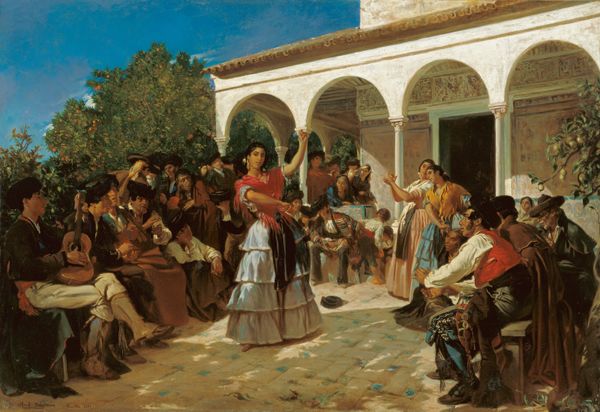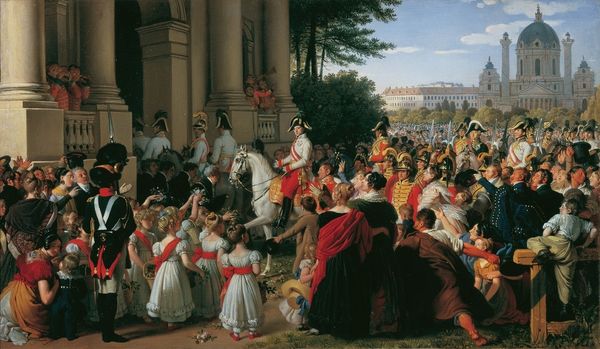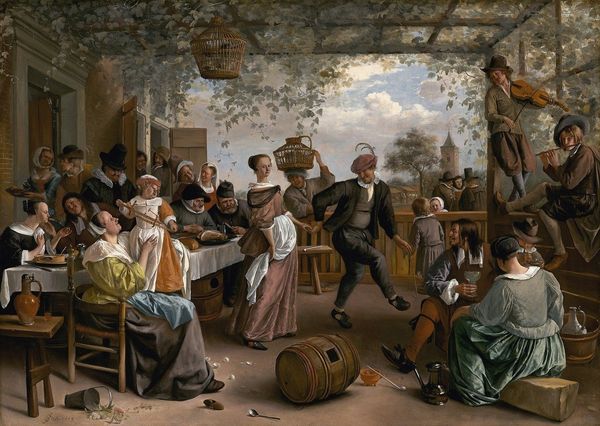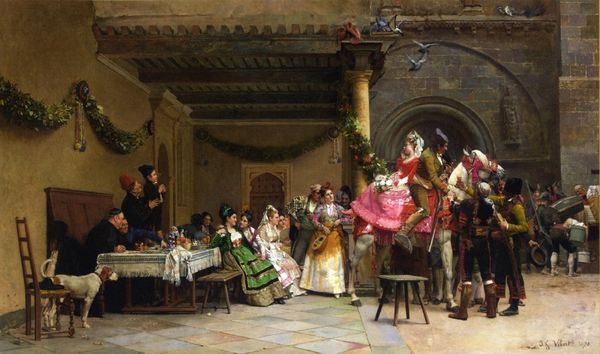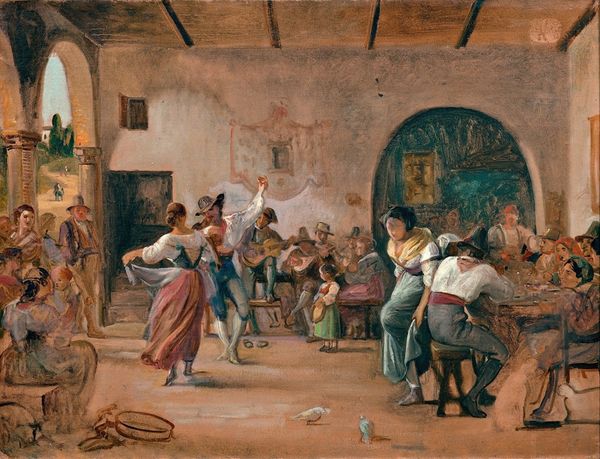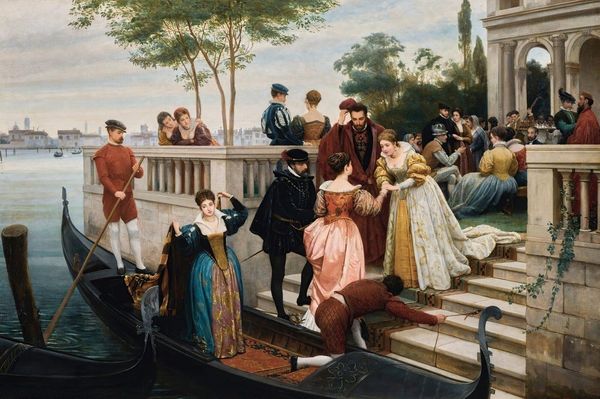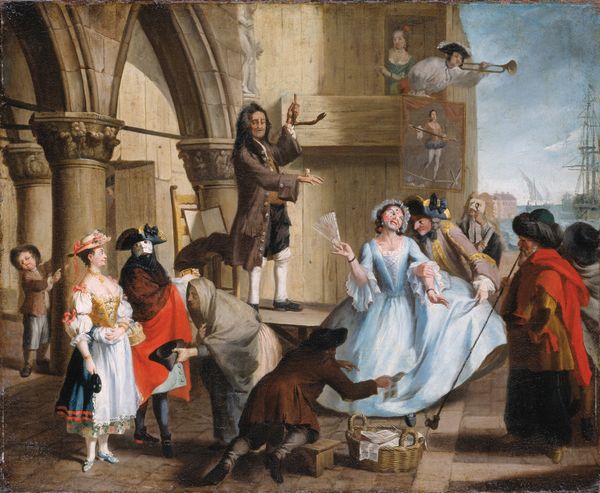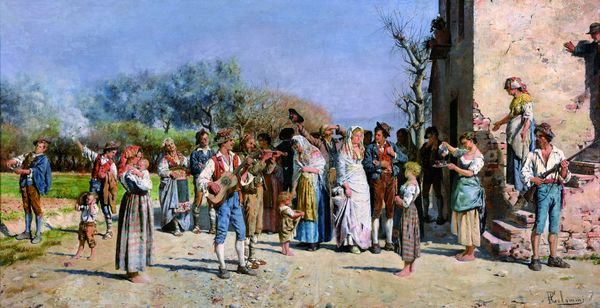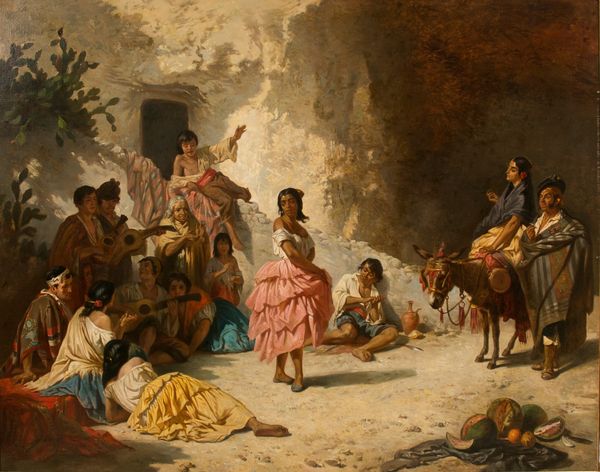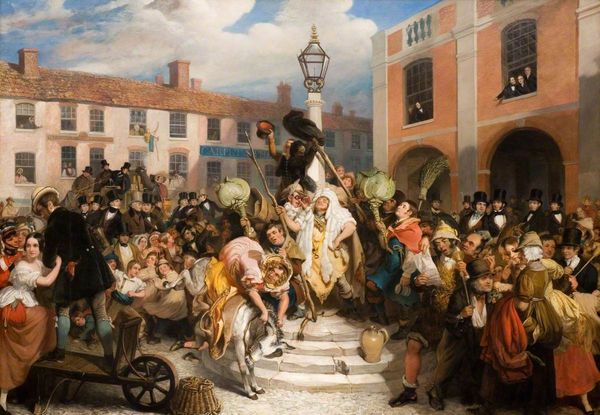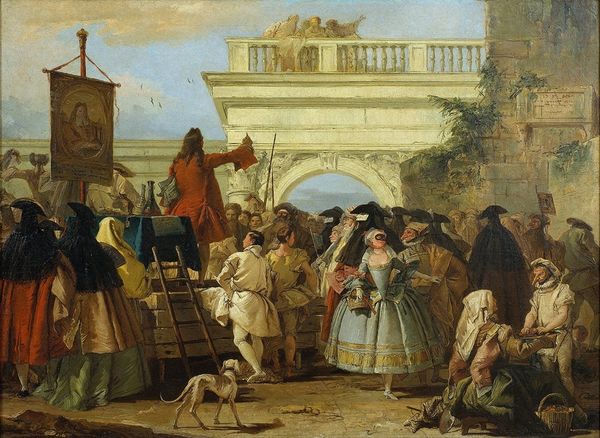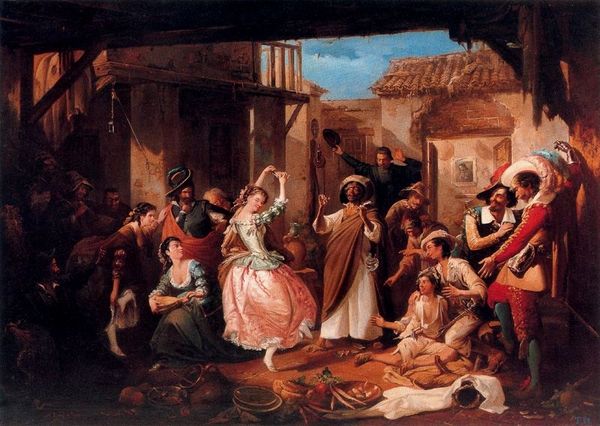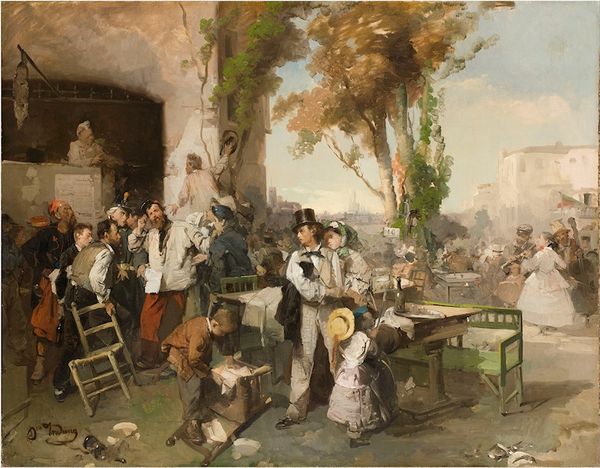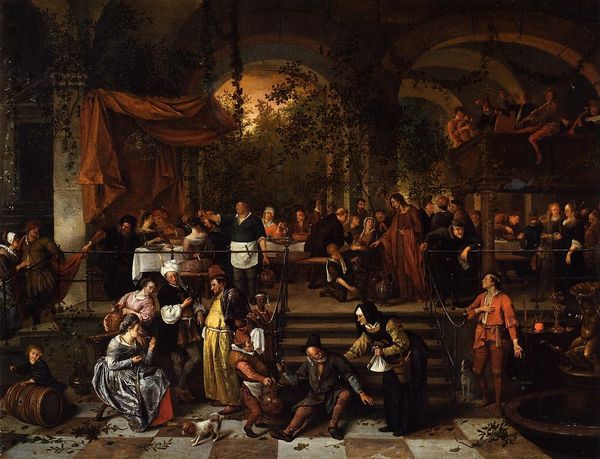
oil-paint
#
gouache
#
figurative
#
oil-paint
#
landscape
#
figuration
#
oil painting
#
romanticism
#
genre-painting
#
history-painting
#
academic-art
Copyright: Public Domain: Artvee
Editor: Wilhelm Marstrand's 1839 oil painting, "Romans Gathered for Merriment at an Osteria," really captures a lively energy. There’s such a sense of community and joyous celebration. How do you interpret the scene’s symbolism, and what might the choice of this specific setting communicate to its viewers? Curator: The Osteria, a simple tavern, becomes a stage. Notice how Marstrand orchestrates the scene. The dancers are foregrounded, framed by a portal offering glimpses of the city, and beneath a religious icon—a layering of sacred and secular space. This wasn’t just merriment, it’s a deliberate representation of Roman identity, almost a Romantic’s yearning for a vibrant past. Do you see how the colors enhance this? Editor: I do. The bright clothing contrasts with the weathered architecture. It creates a kind of vibrant nostalgia. The revelry almost feels defiant. Curator: Exactly. Defiant, but also a reaffirmation of cultural roots. Think of the tambourines and lute; they're not just instruments. These objects represent cultural memory, tradition passed down through generations. What story do you think this picture is telling through those symbols? Editor: I’m starting to see how the layers build: a depiction of revelry as a symbol for Roman cultural pride, all staged in a way that connects the past and the present. Curator: And remember, paintings like these reinforce identity – visually embedding cultural continuity into the minds of its viewers. Editor: That's fascinating! I initially just saw a party scene, but now I understand it’s much more, it's an idealized assertion of cultural memory. Curator: Precisely. Images are never neutral, they're cultural containers, packed with meaning. And it's in these layered symbols that we find the artist’s intent.
Comments
No comments
Be the first to comment and join the conversation on the ultimate creative platform.
